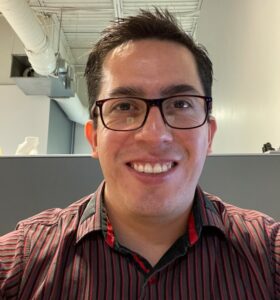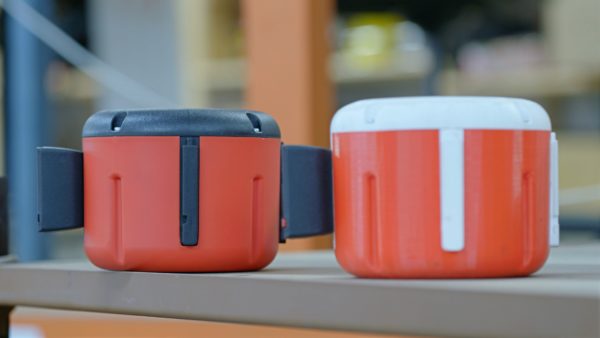Engineers and designers have been manufacturing prototypes for decades, but the tools, materials and processed used to create them continuously evolve. The truth is, in order to close the gap between as designed and as manufactured, there is a wide range of processes that need to be understood, mastered and optimized. Sometimes, achieving satisfying results in an AM production remains very dependent on the holistic experience of users as cost factors, efficiencies and design rules do not (always) directly translate from one project to another. However, it never hurts to learn from others’ experience. In this opinion article, three experts who have built up expertise in various sectors of activity ( space, R&D and pedestrian management systems) share a few tips they wish they’d known sooner in their 3D printing journey.
 Sabrina Kerber is a space architect and analogue astronaut. She currently works as UAV Pilot at Avy and was part of a lunar simulation at the renowned HI-SEAS habitat, where she acted as crew engineer. She has always been working on leveraging the benefits of additive manufacturing for extra-terrestrial habitation.
Sabrina Kerber is a space architect and analogue astronaut. She currently works as UAV Pilot at Avy and was part of a lunar simulation at the renowned HI-SEAS habitat, where she acted as crew engineer. She has always been working on leveraging the benefits of additive manufacturing for extra-terrestrial habitation.
“My favorite tip on optimizing the additive manufacturing workflow and ensuring a cost and time efficient process is ‘Get to know your machine!’ Invest time in learning anything you can about your hardware and software, but also about your specific use case and the exact environment you will be operating in. This might cost you some hours and material in the beginning, but in the long run, really knowing the quirks of your tool will result in a streamlined process with optimal results. Every 3D printer is a little different; every environment has a different set of parameters – the outcome of your prints can be influenced by the altitude you print at, the humidity and temperature and how well you are able to control these factors with your machine. At the same time, every use case calls for different aspects and results. Make sure you know where the weak points of your print are – metaphorically speaking, as well as quite literally. In which areas can you save on time, which points will need special attention during the design and print process? I’m investigating the advantages of additive manufacturing for space exploration, the most important of which is the possibility to reduce payload and lower the necessity for resupply missions – both of which will result in a more time and cost efficient mission. However, in an isolated environment, such as a space mission or analog simulation, successfully using 3D printing heavily relies on the crew knowing every detail about the workflow of their specific machine, as well as what to expect of it in such an extreme environment.”
 Juan Carlos Cruz Robles has spent the last 10 years in R&D of additive manufacturing technologies. Out of those years, 6 have been dedicated to developing hardware and material process development for VAT photopolymerization technologies at 3D Systems. Most recently, he made a transition to PPG, where he is bringing his additive experience to strengthen their capabilities. Below, he points out an important factor to increase productivity for VAT photopolymerization AM technologies:
Juan Carlos Cruz Robles has spent the last 10 years in R&D of additive manufacturing technologies. Out of those years, 6 have been dedicated to developing hardware and material process development for VAT photopolymerization technologies at 3D Systems. Most recently, he made a transition to PPG, where he is bringing his additive experience to strengthen their capabilities. Below, he points out an important factor to increase productivity for VAT photopolymerization AM technologies:
“There are several approaches on how to be as efficient as possible on a workflow when using any of these AM technologies. A big part of the workflow is post-processing. Many people think speed in 3D printing is the bottleneck. However, most of the times, a functional part in any AM technology must be subjected to a post-processing cycle, which sometimes can even take longer than the printing step. Therefore, it is crucial for an efficient AM process to consider the potential bottlenecks in the post processing cycle to get as much throughput as possible.
For VAT photopolymerization post processing especially, cleaning is key to not only remove excess of resin but also sometimes to treat surfaces from not getting sticky. Depending on resin viscosities mostly and cleaning solvents, the cleaning cycle can increase overtime if the cleaning solvents are not monitored constantly. Typical cleaning solvents are IPA, TPM or a combination of both. A hydrometer is recommended to constantly check the saturation of the solvents and make sure a threshold is not reached. Otherwise, the cleaning process will just take longer and eventually not work at all.”
Whatever AM process you use, there is a great chance that post-processing remains one of the most time-consuming stages of the manufacturing process. Some technologies require less post-processing than others, but all 3D printed parts require a certain degree of post-processing. It can be interesting to know the variety of stages that 3D printed parts have to undergo under this big umbrella term, but what will help you reduce labor time and costs, is to find the ones that can be automated.
Josep Maria Salvador Morón is a designer and technical manager at DLIMIT, a company that has over 15 years of experience in the manufacture and distribution of pedestrian management systems.
“If you want to optimize your 3D printing workflow, I always recommend a little planning. It’s super important to know how long the parts take to print. If I will have enough material for a particular print or if the part will be finished tomorrow when I get to the office. These types of questions lead you to answers such as, it is sometimes better to print fewer pieces and be able to make two prints within your working day, than to fill the surface completely and have your print stop at 19:00, when there is no one in the office to make a new print.

On the other hand, if we are talking about a large number of parts to be produced, there are technologies and 3D printers such as BCN3D’s IDEX technology that prints two identical or symmetrical prototypes at the same time, optimising production times. For example, it is not the same to print 40 units on a printing surface with one extruder as it is to print 20 + 20 with two extruders working simultaneously. It is the same 40 units, but we have reduced the production time by half.
At the design level, it is always advisable to reduce the size of the parts as much as possible in order to save time and material. Sometimes, internal departments tend to oversize parts to give them more mechanical consistency. I recommend trusting the technology, without asking for the impossible. It may seem complicated at first, but with practice you learn a lot.”
So far, a few best practices for optimizing schedule that have become trending include:
- Batch multiple parts into one build.
- Print small, shorter runs during the day and large builds overnight.
- Use multiple printers to distribute the workload and increase same-day throughput.
- Use dashboards to receive alerts when a print finishes and to manage and watch multiple printers remotely.
That being said, you may read thousands of tips per day, but if you don’t understand your needs and the reasons why you choose a specific AM process over another, chances are that you won’t be satisfied with your results. As you may have realized, finish and details won’t necessarily matter for basic concept models, while real-life prototypes may need technologies and materials designed for fine details and high-quality surface finishes.
And you, what 3D printing process do you use and what’s your tip to optimize your production workflow?
This article has first been published in the July/August edition of 3D ADEPT Mag.
Remember, you can post free of charge job opportunities in the AM Industry on 3D ADEPT Media or look for a job via our job board. Make sure to follow us on our social networks and subscribe to our weekly newsletter : Facebook, Twitter, LinkedIn & Instagram ! If you want to be featured in the next issue of our digital magazine or if you hear a story that needs to be heard, make sure to send it to contact@3dadept.com






